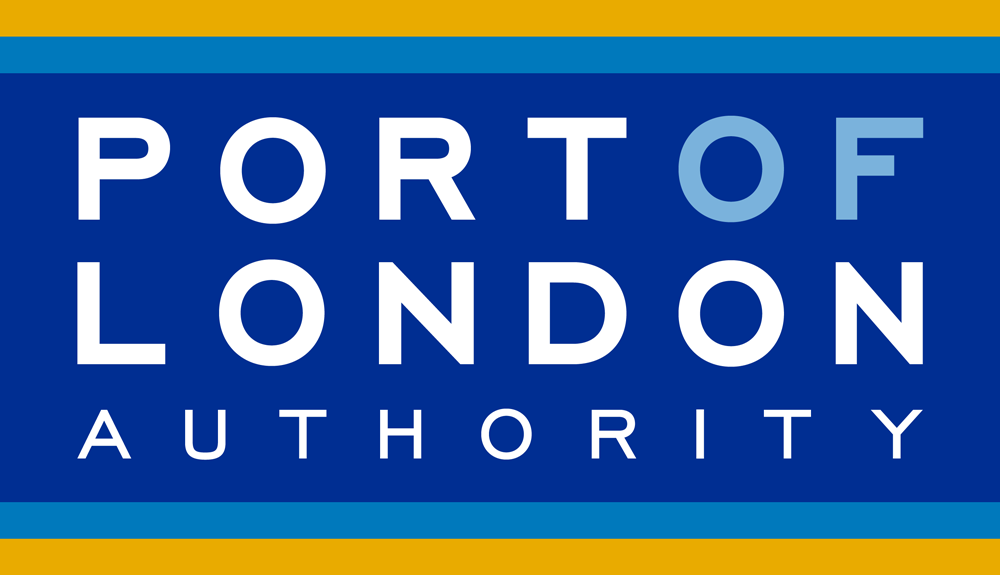Live Tides
NOTICES TO MARINERS
Charts & Surveys

Incident reporting
Life-threatening emergencies on the river:
Call 999 and ask for the Coastguard
For near miss, safety observations and incident reporting click below
Towage Code Amendment to Tilbury Lock Tug Allocation Tables
Consultation C01-23
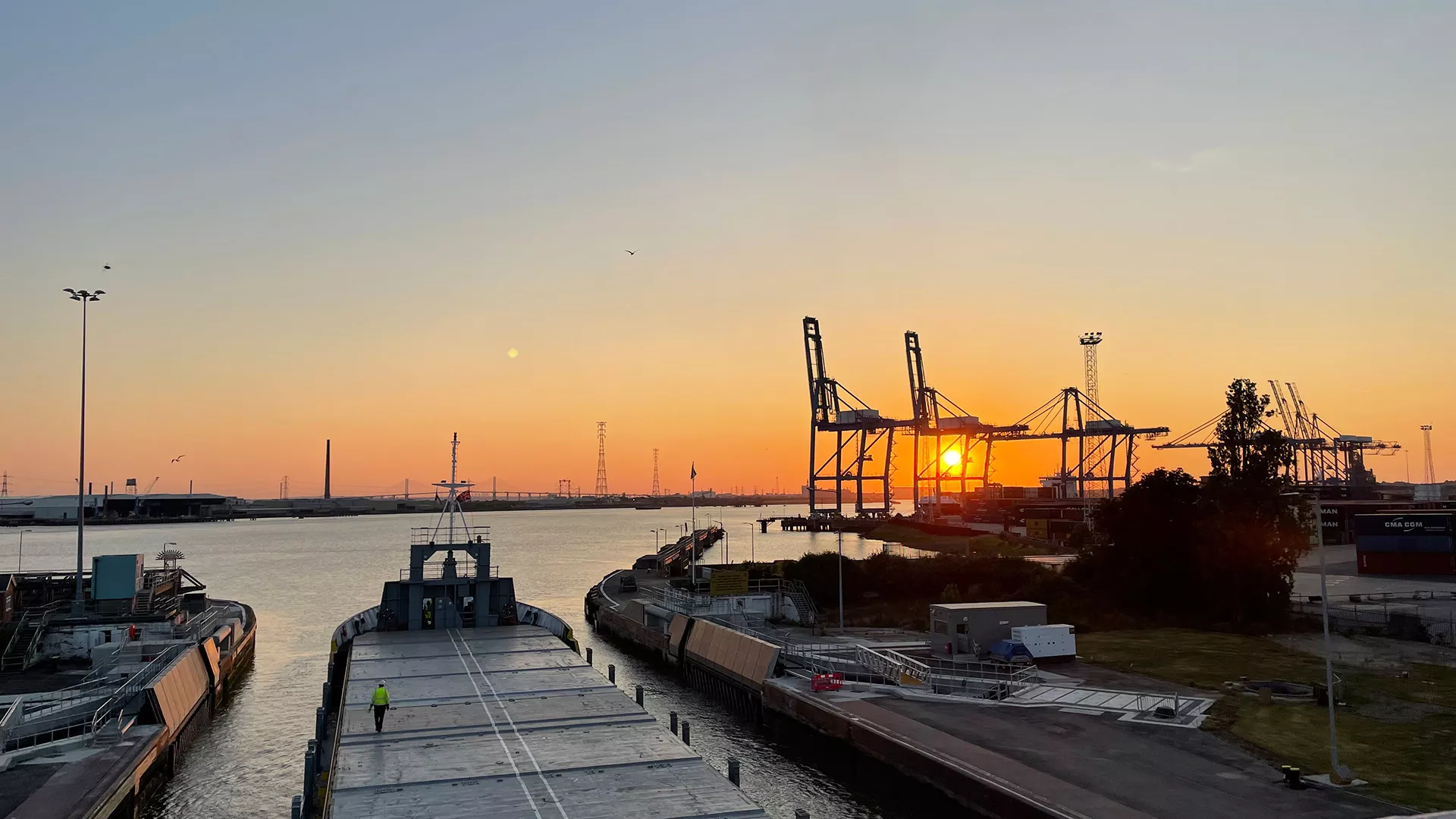
Consultation Statement C01-23
This consultation ran from 31/01/2023 to 01/03/2023. The below statement has been provided to summarise the Port of London Authority’s response.
Feedback was received from PLA pilots and ship’s agents. In general, support was given for the proposal. Concern was raised around the lower limit requiring a single tug, with ships below the pilotage limit requiring a tug. This was not the intention of the proposal and a lower LOA limit of 80m has therefore been included in the final edition.
The proposed change will be implemented in due course. Once implemented, vessel Masters, agents, owners and operators will be notified via a Notice to Mariners and a NABSO.
Towage Code Amendment to Tilbury Lock Tug Allocation Tables
Consultation C01-23
In the interests of navigational safety, a change to the number of tugs allocated to ships <129.9m LOA and <8m draft entering Tilbury Dock is proposed. This amendment to the Code of Practice for Ship Towage Operations on the Thames would see ships of this size without a bow thruster required to take a minimum of one tug. The change to the code is shown in the extract on the following page, with the amendment highlighted in yellow.
Any comments you may have in response to this consultation exercise should be addressed, in writing, to the Marine Compliance Department, at the address below or by e-mail to: [email protected], to arrive by 27th February 2023.
We are happy to answer any queries over the phone (Tel: 01474 562200) however, we regret that verbal submissions cannot be accepted.

Historic Gravesend pier is given £800,000 refurbishment

The Port of London Authority (PLA) is investing £800,000 in replacing the roof and refurbishing the interior of Royal Terrace Pier, Gravesend, a Grade II listed building that dates from the 1840s. Work began in September 2022 and the roof replacement is due to be completed in April 2023.
Royal Terrace Pier is the base for vessels in the PLA’s pilotage, hydrographic and harbour service operations. The Pier is also home to Gravesend lifeboat station, which is manned 24 hours a day.
PLA’s Civil Engineer Nick Jordan said:
“This is a major refurbishment, which is being fully managed by the PLA’s Civil Engineering team. The project includes the use of local roofing specialists and uses Welsh slate, which is in keeping with the original materials used on this important and historic building. Once this is completed, the interior will be refurbished which will secure the future use of the building.”
Royal Terrace Pier was named such as it was where Princess Alexandra of Denmark, later Queen Alexandra, landed in the 1880s before her marriage to the then Prince of Wales, later King Edward VII. The PLA purchased the pier in the early 2000’s from Alexandra Towage.
Related content
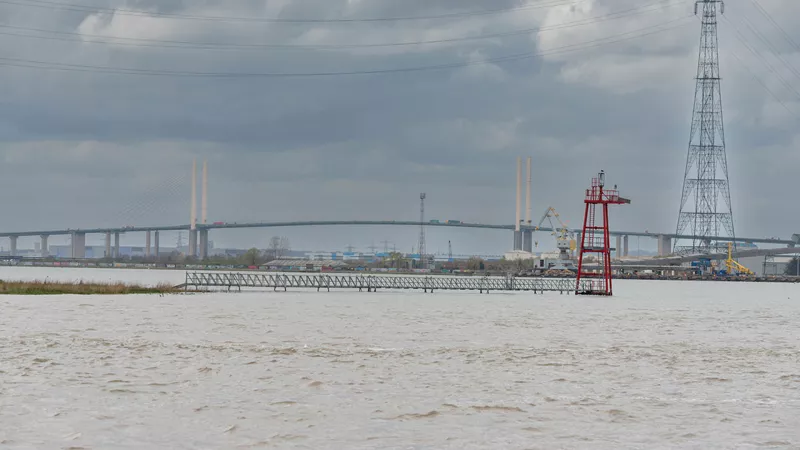

Location: London/Gravesend Remuneration: £28,971 per annum for a commitment of up to 24 days per...

Thames masterplan set to scope long term river opportunities
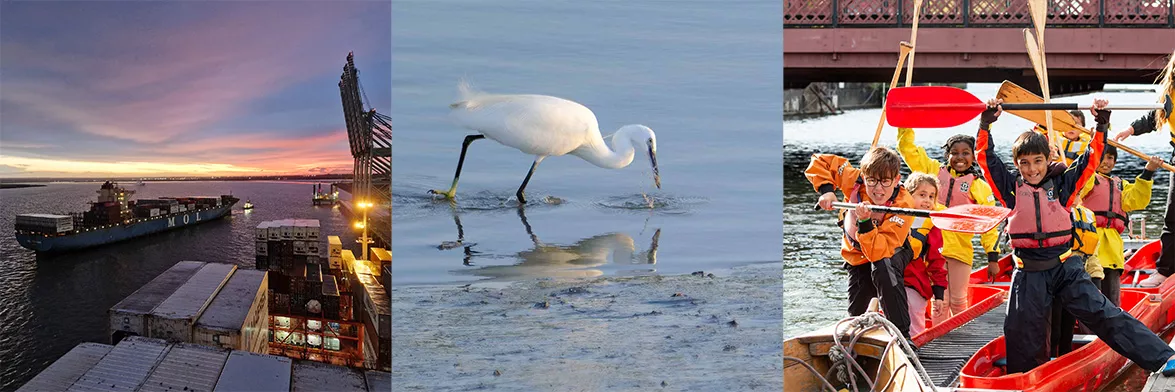
The Port of London Authority (PLA) has begun a major masterplanning exercise to realise the growth opportunities along the Thames, and help integrate the river into the economy and lives of communities, as it starts implementing Thames Vision 2050.
Thames Vision 2050, is the river development framework launched late last summer at London’s City Hall. The tidal river is already home to the UK’s largest port and busiest inland waterway, a crucible for sporting talent and a unique natural habitat. The Vision sets out future priorities for the river around three themes:
- Trading Thames – the No.1 Net Zero UK trading centre
- Destination Thames – a place to live, visit, play and enjoy
- Natural Thames – clean air, water, and land, supporting diverse wildlife
Drawing on the PLA’s unique mix of marine and planning expertise, the masterplanning process will capture all potential strategic opportunities on the river and provide clarity in decision-making processes and as a tool for investment decisions. It will be developed with, and is expected to become a key tool for, partners and local authorities along the Thames.
“The Vision sets out the high-level ambitions for the river,” explained James Trimmer, director of planning and development at the PLA. “Through the masterplanning process we will build in the local detail, drawing out the opportunities for trade, travel, sport and nature along the Thames and its riparian hinterland.
“The masterplan will pick out the existing operations and potential options for development around trading and destination activities, and further improvements to the natural environment for each borough, including options for the delivery of Biodiversity Net Gain. Once complete, it will equip us with a clear spatial articulation of the ambition set out in the Vision, informing future planning and investment decisions.”
The 95 miles of the tidal Thames covers 22 boroughs and councils. In the initial phase of development, the PLA expects to work with the London boroughs of Bexley and Newham, and councils in the Thames Gateway. Masterplan development will be advanced at local level over the next 18 months; a river wide consultation will take place once the overall masterplan has been developed. Outline discussions have already started with overarching partners, including the Environment Agency, Greater London Authority and Thames Estuary Growth Board.
PLA chief executive, Robin Mortimer commented:
“The interface of riverbank and water, trade and environment, culture and sport can often seem a daunting, sometimes confusing mix. We are experts in the complexity of managing the point where river and land meets. As a result, we are uniquely placed to bring the key people together to develop the masterplan, which will be essential to making the most of the river over the long term.”
The masterplanning process will draw on forecasts and studies completed through the development of the Vision, together with bespoke work. These show that the river will be busier than ever in the future: up to 50% more cargo is expected to be moved than today; the scheduled passenger services network will grow; interest in the river for moving light freight and keeping white vans off the city streets is stronger than ever. There is a strong commitment to make watersports activity available to wider and more varied communities, through the Active Thames programme (https://activethames.co.uk/).
Thames masterplanning is part of the Vision Action Plan, which reflects the priority areas of: safety, net zero transition, resilience, technology and access and inclusion. To support growing river use, the PLA has committed as part of the action plan to developing a new marine control centre at its main base in Gravesend, its largest single investment in more than ten years.
Full details of the Vision, Action Plan, forecasts and supporting films can be found at: https://thamesvision.pla.co.uk/.
Related content


Location: London/Gravesend Remuneration: £28,971 per annum for a commitment of up to 24 days per...

Active Thames awards funding to 26 organisations
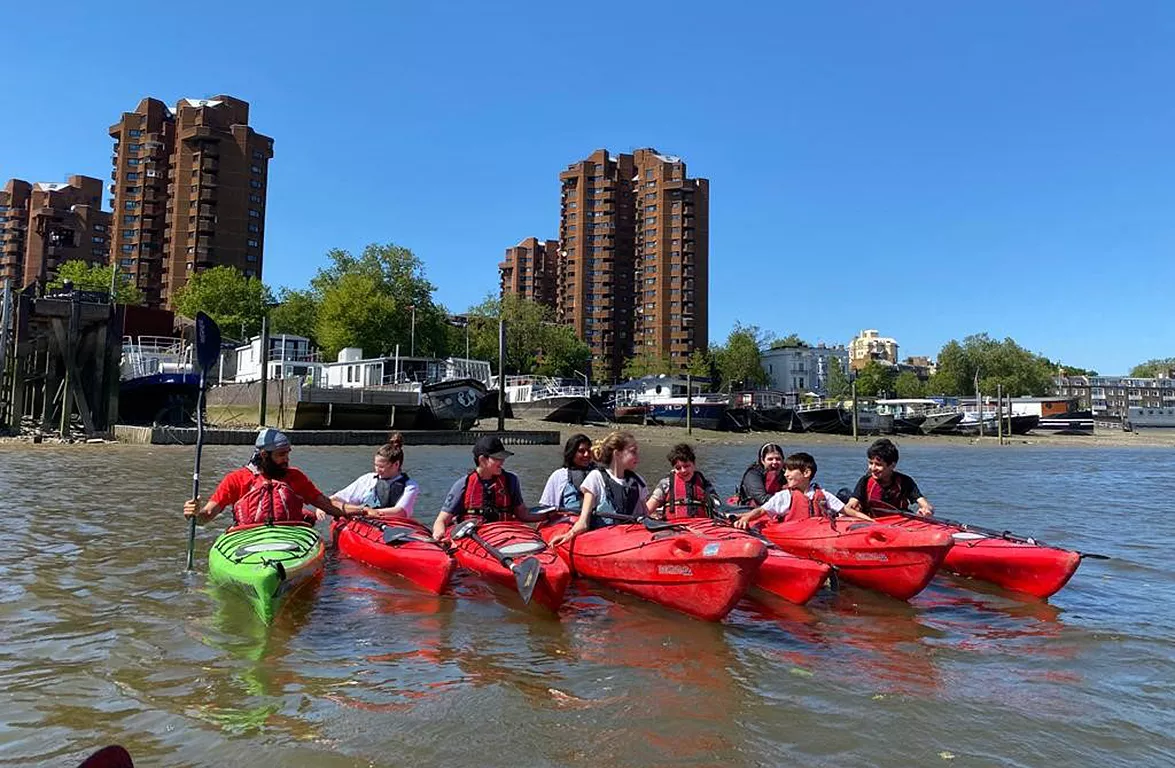
Active Thames, led by the Port of London Authority (PLA), has awarded £150,000 in grants to 26 successful applicants. The increase in funding from over £90,000 last year to nearly £150,000 this year demonstrates the continuing commitment Active Thames partners have made to promoting activity on the tidal Thames and inland waterways in London, Kent, and Essex.
Active Thames aims to encourage groups that are less likely to engage in physical activity on the river, including individuals from ethnically diverse communities, lower socio-economic groups, and people with disabilities.
The recipients of this year’s round of funding cover a wide range of activities, including sailing, paddlesports, rowing and, for the first time this year, walking.
The funding will reach a diverse range of groups along the tidal Thames and inland waterways, from SilverFit, which aims to promote happier, healthier aging through physical activity, to South London Scouts, which works with 14-25 year olds and ensures that those from lower socio-economic backgrounds are able to take part in all their activities.
Jenny Cooper, PLA sports manager, said:
“Building on the success of last year's grants, 2023 Active Thames funding will help deliver our Thames Vision: more people using the river for leisure.
“All the successful applicants have demonstrated how they will help us to achieve the goals of Active Thames, which is to make the river more inclusive, diverse and accessible to all."
This is a full list of the successful grant applicants:
The AHOY Centre, based in Deptford, will host the East London Instructor Programme, to tackle the shortage of qualified coaches in London, Kent and Essex and strengthen the future of sailing. An investment of £17,400 into the watersports workforce will support young sailors to qualify as instructors. Local clubs can signpost young people to this programme and see them progress into coaching.
A further £2,700 grant will help the centre to change lives through rowing and sailing.
AquaPaddle who organises paddleboarding sessions for individuals and groups who would not be able to do so otherwise due to their financial hardship, disability, or social circumstances, will receive a £5,000 award to provide at least 100 stand-up paddleboarding sessions in central and east London.
Blue Therapy Active is a thriving community of people who enjoying being on, in or near the water. Offering paddlesports, swimming, walking and cycling to the people of Essex, the group continues to expand and is in need of more equipment. £4,980 will support the club to engage with more people over the coming year and build on the achievements of last year’s Active Thames grant.
Cambria Sea Scouts, working in Greenhithe and Dartford, will receive a grant of £3,105, to be able to offer six powerboat courses, ten VHF radio courses, and 12 First Aid courses. They also intend to offer sailing sessions for the wider community at a low cost.
Erith Yacht Club will receive a grant of £5,000 for several initiatives. Volunteers will be sponsored to achieve RYA Senior and Dinghy Instructor qualifications, the club will purchase a Drascombe lugger and be better-equipped to provide sessions for people with disabilities, and the club will continue to work closely with their local activity centre, Danson Park Adventures, so that young people taking part in sport on the lake can progress their skills and enjoy the Thames.
Fulham Reach Boat Club’s state school rowing project will be supported by a £5,000 grant. Young people in Years 9-13 will be given the opportunity to row on the Thames in Hammersmith without any financial barriers. The club will work with schools to ensure the students selected are those who are likely to benefit from rowing the most and, if young people want to continue to row, they will be able to sign up as members.
Building on the success of last year’s project, which also received funding from Active Thames, Gravesend Sailing Club needs a new safety boat to support club and community sessions. A grant of over £3,000 will enhance the safety provision at the club and to do more to work with local groups, such as the Sea Cadets.
Laburnum Boat Club will be able to continue their Inclusive Waters project for a second year. It will also mean they can expand the project to include walking trips and introduce young people to the Thames Path. Disadvantaged youths will benefit from kayaking, canoeing, stand-up paddleboarding and walking. The grant of £4,956 will also help to upskill the coaches at the charity and support their development too.
The Leaside Trust in East London will receive a grant of £2,400 and provide a girls’ club that builds upon their engagement with the Orthodox Jewish community, supporting canoeing, kayaking and stand-up paddleboarding sessions. This grant will support the outreach of the East London charity, who work with around 6,000 people a year.
London Youth Rowing’s Active Row programme has a commitment of £20,000 a year for the next two years, which will be used to expand to work with schools in Gravesend. Schools will be provided with coaching and indoor rowing machines to set up a club, and progress to rowing on the water at Gravesend Rowing Club in the spring and summer.
Lower Thames Rowing Club, based at Old Leigh and Two Tree Island in Essex, has established a strong link with mental health charity Trust Links. With a grant of £5,000 and existing club funds, they will purchase a new rowing boat, which will allow them to offer more taster sessions, and continue their work with Trust Links.
Margate Yacht Club is in need of a new engine for their safety boat, so that they can confidently provide a reliable and safe environment for people to learn and participate in dinghy sailing, canoeing and paddleboarding. £5,000 will provide most of the funding needed to purchase a new engine at the club.
Newham Ability Camp is a pan disability sports group running 3 activity sessions a week. The club founder, Paul Archer, is looking forward to being able to offer people the chance to take part in rowing again this summer with a grant of £400. The club had a very positive experience on the water last year with the support of coaches from London Youth Rowing.
The Pirate Castle has several community programmes in place, such as after-school clubs and holiday programmes for young people, LGBTQ+ Rainbow paddlers, and an ‘Upper-Deckers’ club for over 50s. £4,970 will develop 12 new coaches and instructors, which in turn will help deliver the programmes.
A grant of over £4,800 will enable Poplar Harca, a housing association, to build on a successful pilot project they have been working on with Moo Canoes. Women from the area will complete the Paddle Discover award, and kickstart a new boat club on the canal. Funding will also provide swimming sessions, boosting the confidence and skills of the women involved.
The Proper Blokes Club is a community project for men’s mental health. £5,000 will support more walk and talks along the Thames Path national trail, and the club hopes to double their membership over the coming year. They run regular walks in several areas along the Thames in South London, including Greenwich, Woolwich and Southwark.
The Ramblers will receive over £8,000 to develop two projects; guided walks along the Thames Path and the England Coast Path, as well as walk-leader training days for community groups and leaders who wish to organise walking sessions. It is hoped that this grant, managed by the Ramblers, will be helpful to other applicants who wanted to develop walk leaders.
Re-Instate is a charity working to improve employment opportunities, quality of life and well-being for disadvantaged people in the London Borough of Bexley including people experiencing mental ill-health, people with learning disabilities, autistic adults and young people. £5,000 will support the 215 Smiles project to run two weekly walking groups on the Thames path: one for people with learning disabilities and another for people experiencing mental ill-health.
A grant of £6,000 will support two projects at the Sea-Change Sailing Trust. The trust will provide a sailing residential for people with disabilities aboard the engineless traditional Thames barge the Blue Mermaid, targeting community groups in Kent and Essex. The funding will also enable them to train up 6 new recruits, helping to secure the future of Thames sailing barges.
Shadwell Basin Outdoor Activity Centre has a strong reputation for developing the young people they work with into water sports coaches. A grant of over £4,000 will support Shadwell Basin Outdoor Activity Centre’s adventure coach training scheme, supporting young people to become qualified as outdoor activity instructors.
SilverFit, founded by the UK’s oldest female Ironman triathlete, aims to promote happier, healthier aging through physical activity and, at the same time, combat social isolation. £5,860 will support the charity through developing new Nordic walking leaders, who will run sessions along the Thames Path in Kingston. SilverFit will source new members through targeted outreach into deprived communities, and through GP referrals (social prescribing).
South London Scouts aims to triple the number of 14-25 years olds they work with over the next three years. Canoeing expeditions and the Duke of Edinburgh scheme are made available to young people, with support mechanisms in place to ensure those from lower socio-economic backgrounds can take part in all of their activities. £3,500 will support their work and cover the cost of training and qualifications for the volunteers who run the scout group.
Thames Barbarians is a pilot gig rowing club based in Gravesend. Supported by Active Thames in 2022, this year’s grant of £5,000 will help maintain their momentum in club growth. They will continue to provide open days for people to try out fixed seat rowing and recruit new members, whilst also growing their competitive section.
A grant of £2,000 will launch a series of Cool Walks and support the Rewilding Arcadia project run by Thames Landscape Strategy. As well as exercise, the walks will boost mental well-being and provide companionship. They hope to increase the activity levels of people who might normally find walking challenging.
Building on the success of last year’s Visually Impaired Paddling programme, Tower Hamlets Canoe Club has secured over £3,000, which will allow them to continue to run beginner courses and offer paddling trips away from the basin. The club will also purchase equipment to adapt to the needs of blind and visually impaired paddlers, such as audio guiding equipment and lights.
Writtle University College will soon be able to offer stand-up paddleboarding to their community of students, local schools, youth groups and disability groups. Having already invested in a jetty for the on-campus reservoir, new equipment will help launch the reservoir as a new space to be active. With strong existing links to charities such as Chelmsford Disability Club, Writtle are looking forward to making a conscious effort to run multiple inclusive sessions, as well as events, open days and work experience opportunities.
Strong applications that build on last year’s grants to Sport Works and Herne Bay Sailing Club have also been put forward for Sport England funding, and a further £1500 will be provided to the sailing community.
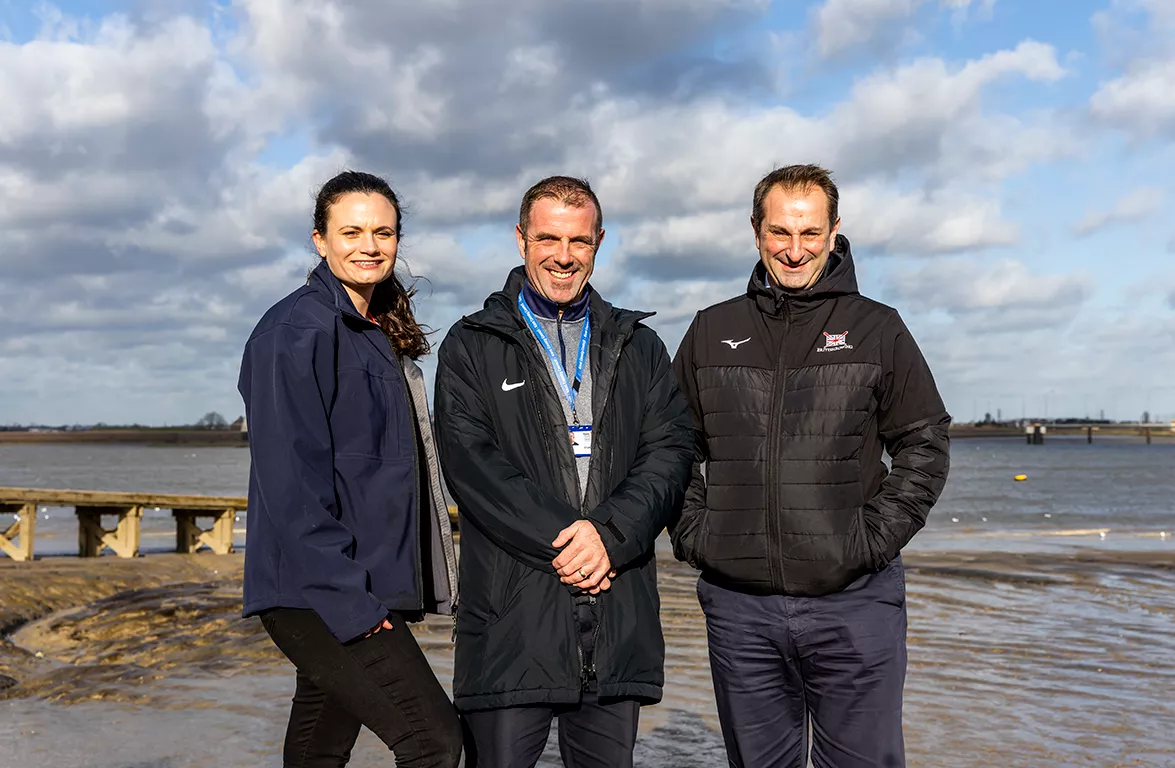
Related content


Location: London/Gravesend Remuneration: £28,971 per annum for a commitment of up to 24 days per...

Maritime UK appoints PLA chief executive as its new chair
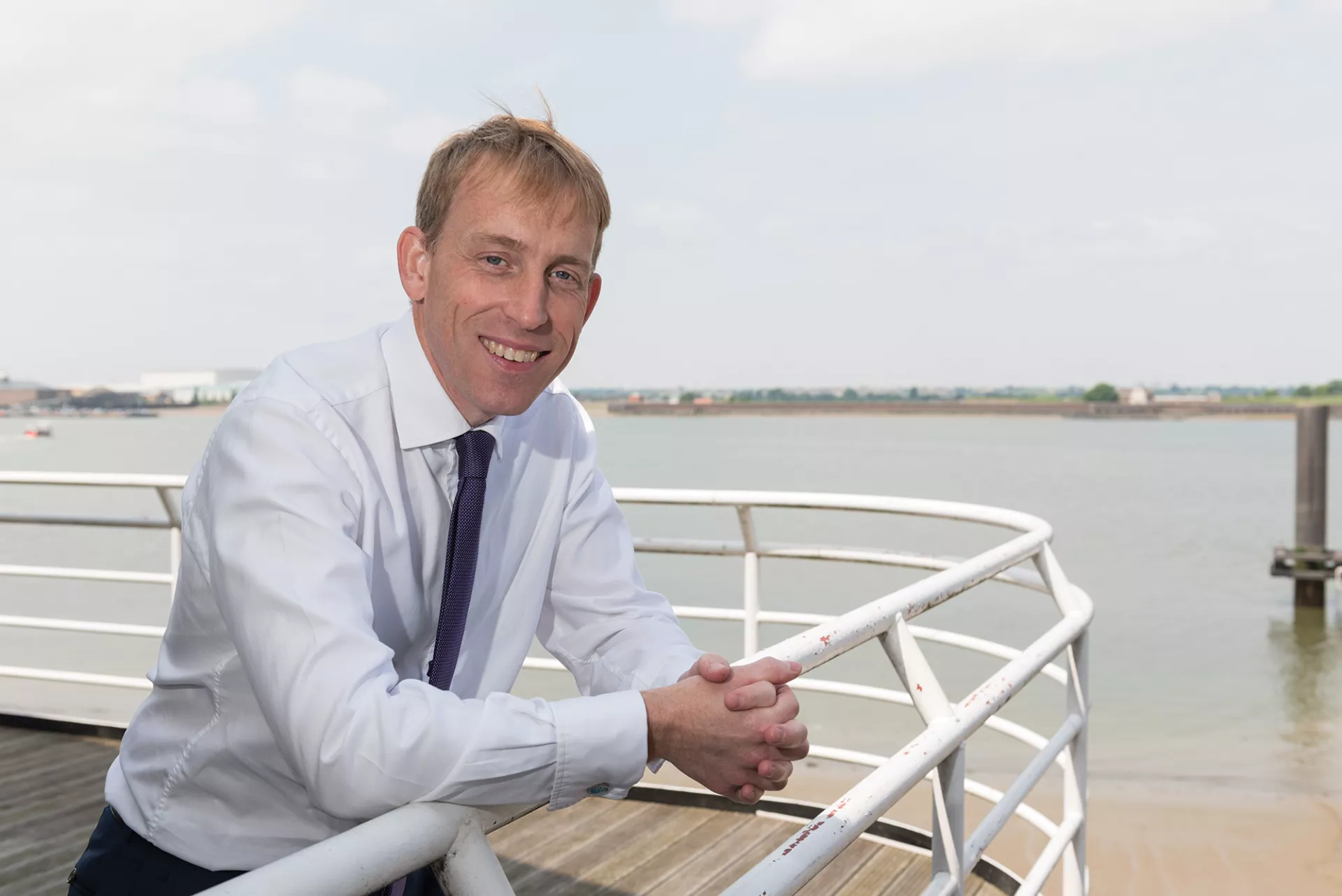
Maritime UK, the umbrella organisation for the UK’s maritime sector, has appointed Robin Mortimer as its new chair and Tom Boardley as vice chair.
Robin was nominated by the British Ports Association and UK Major Ports Group whilst Tom was nominated by the UK Chamber of Shipping.
Currently CEO at the Port of London Authority, Robin was previously vice chair and replaced Sarah Kenny who served as Chair from 2021.
Robin started his term on 1 January 2023 and will be working with members to help steer the sector through the next two years, with its response to climate change top of the agenda. Maritime UK will be working closely with the government on its refresh to the Clean Maritime Plan, due to be published in 2023.
Maritime UK’s current priorities are the environment, people, regional growth, competitiveness and innovation and works to bring coherence to the sector’s asks of government on these shared priorities as well as delivering programmes and initiatives to help move the dial within each area. Programmes include the Diversity in Maritime programme, careers and outreach programme and Regional Cluster Development programme.
Commenting on his appointment, Robin said:
“I am honoured to be taking the Chair of Maritime UK and to be given the opportunity to serve the UK's maritime industries at such a crucial time.
“There is now a much greater appreciation and understanding of the maritime sector within the UK, and how we can support major national missions like, decarbonisation, levelling up and becoming a research and development powerhouse.
“Our task over the next two years is to embed that progress, deliver a robust and tangible Clean Maritime Plan, increase the impact of Maritime UK’s programmes in critical areas like people and bang the drum for UK PLC across the world. All of this whilst responding to challenging headwinds caused by underlying economic conditions and geopolitics.
“I am convinced that by working closer and closer together our sector will thrive, and I look forward to working with the member community to accelerate our progress toward Maritime 2050.”
Maritime UK is the umbrella body for the maritime sector, bringing together the shipping, ports, services, engineering and leisure marine industries. Its purpose is to champion and enable a thriving maritime sector. Maritime UK has responsibility for the coordination and delivery of industry recommendations within Maritime 2050.
Its members are Belfast Maritime Consortium, British Marine, British Ports Association, CLIA UK & Ireland, Connected Places Catapult, Institute of Chartered Shipbrokers, Maritime London, Maritime UK South West, Mersey Maritime, Nautilus International, Port Skills and Safety, Shipping Innovation, Society of Maritime Industries, Solent LEP, The Baltic Exchange, The Seafarers' Charity, The Workboat Association, Trinity House, UK Chamber of Shipping and the UK Major Ports Group.
Related content


Location: London/Gravesend Remuneration: £28,971 per annum for a commitment of up to 24 days per...

New Year, new challenge
Andrew Triggs Hodge
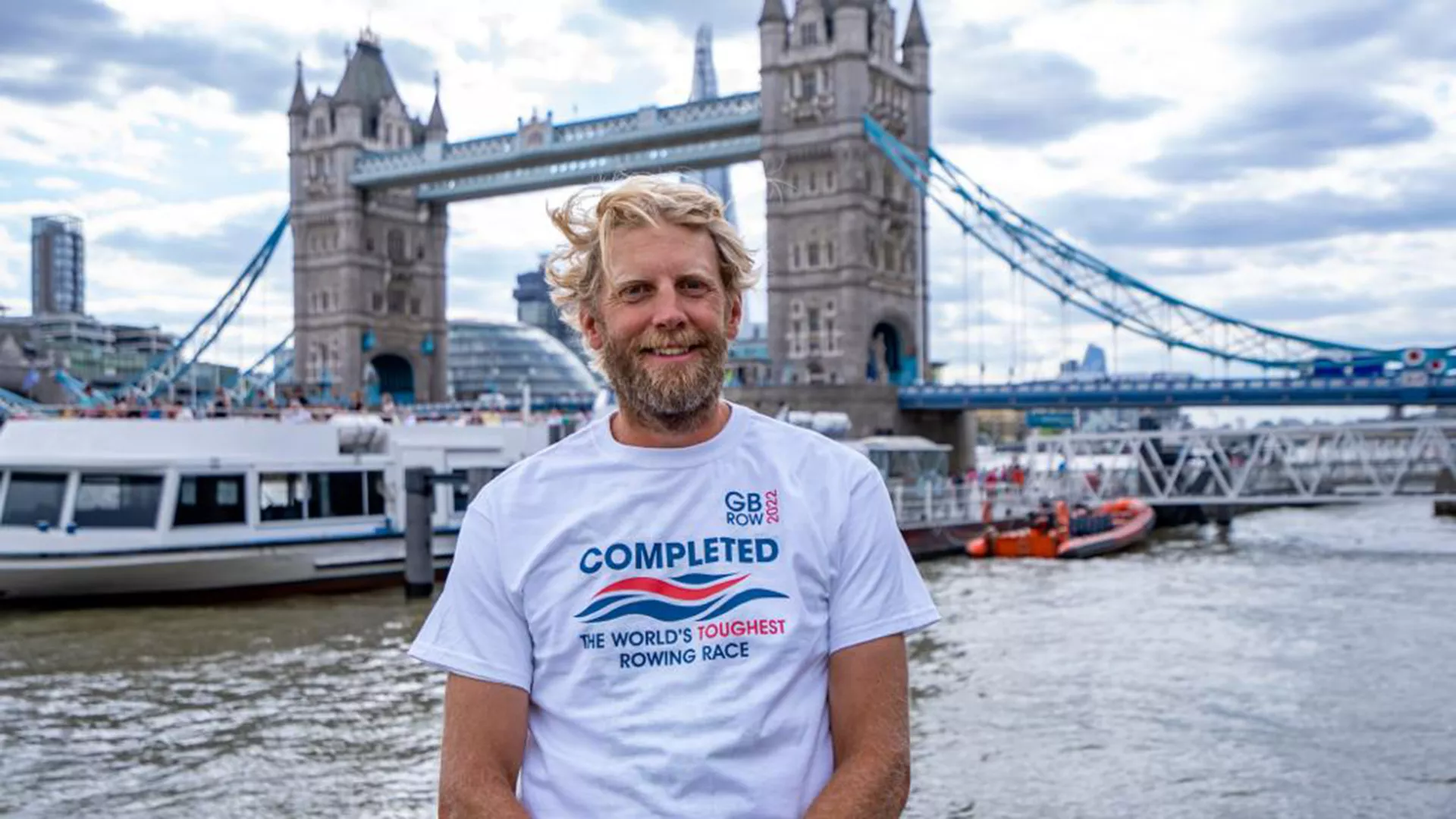
After a "life-changing" 2022, which saw him complete a 2,000-mile charity row around Britain’s coastline, London Youth Rowing’s (LYR) Andrew Triggs Hodge has another busy 12 months ahead, working to engage more young people in the sport that bought him triple Olympic glory.
Source of inspiration
“Rivers have always been a part of my life.
“Watching how they change, from calm to excited, fascinates me.
“I love the way water moves, how things interact with it and what it can do.
“I was born in Buckinghamshire, but grew up in the Yorkshire Dales, by the River Wharf.
“We moved there when I was one. The area will always have a special place in my heart."
School report
“I have to say I was pretty rubbish at school – including at sport.
“I was always in the back three for cross country running and last to be picked for rugby.
“I can’t honestly say I had a childhood hero or role model.
“It would only have served to highlight my many failures as a youngster.
“I never really felt like I could aspire to anything.
“I did though from an early age enjoy geography and science – subjects at the heart of my degree later in life."
A social rower
“My introduction to rowing only came when I was a student at Staffordshire University.
“A friend suggested I should try it, because it was fun and a good social sport.
“I thought ‘why not?’, little knowing how it would ultimately change my life."
Olympic memories
“My medal-winning performances will stick with me for ever, obviously.
“But my time competing on the international stage had other really special moments – like just being part of a random crew, with differing abilities, and things going better than anyone thought possible and learning from each other.
“That's a really cool feeling!
“Looking back now, I think I actually learned more from the low points.
“And coming last in the Athens eights final was a low!"
Tideway tales
“My first encounter with the Thames came in 1999, racing the eights Head of the River Race.
“Somehow, it seems to have been part of my life ever since.
“Training on the Tideway was memorable to say the least!
“It could be the most exciting, challenging and dangerous bit of water we used, or the most calm and serine.
“It made us adaptable and tough, great skills to develop for Olympic ambitions.
“When I retired from rowing, my life-long fascination with the marine environment led me to work for both Thames Water and Tideway, during the early stages of the development of London’s long-awaited ‘super sewer.’
“As a rower, my first-hand experience of poo and condoms discharged into the Thames had a bearing too, of course.
”Sewage should never be allowed to overwhelm a natural environment.
”The Thames through central London is no exception.
“Happily, there is not too long to go now before the ‘super sewer’ is in action, adding to the improvements resulting from the Lee Tunnel and Thames Water’s upgrades to its sewage treatment works on the Tideway.
“It’s going to have a transformational effect on the health of the tidal Thames – and, I hope, see many more people engage with and enjoy the river.”
GB Row
“Scientific research was also a key motivator behind my participation in GB Row last summer.
“It wasn’t just about the physical challenge, epic though that was, circumnavigating the nation in a rowing boat.
“We were treated to exceptional views that few get to see.
”Images of our majestic coastline that stand out in my mind include the inner Hebrides, the imposing Scottish highlands and sunlight never truly giving in to the night.
”But nothing prepared me for the emotional charge of rowing back under Tower Bridge and seeing my family again.
”It was an intense moment, which I will never forget. I missed them massively.
“GB Row was all the idea of Will De Laszlo, combining his passion for rowing, environmental protections and connecting young people with sport.
“In crews of six, three resting, three rowing, rotating every two hours, the round trip from Tower Bridge was a fundraiser for LYR’s Active Row programme, which helps young people from disadvantaged backgrounds nurture their life skills.
“En route, with the help of University of Portsmouth researchers on board, we collected environmental data to help build our understanding of the oceans that surround these islands.
“It was a huge undertaking, much tougher than I had expected, in a whole range of ways
“Food was army ration packs, and the toilet a pee bottle or 'the bucket'!
”The low point, of course, was the storm that hit us in the Irish Sea, two weeks after setting off, forcing two of our fellow crews to withdraw.
”For hours we had to battle strong side winds and the accompanying waves, exhausted, but with no option but to carry on.
“The RNLI crew who came to our rescue from Cushendall, Northern Ireland, the volunteers from Red Bay RNLI station said they hadn't seen June weather like it for 38 years.
”The human body’s ability to adapt to this sort of physical challenge is incredible.
”The whole thing was an emotional surge like no other I have ever experienced.”
London Youth Rowing
“In 2023, our focus at LYR is diversifying our income stream. That might sound mundane, but it’s a really significant step for us as a charity.
“The money we raise through events is the blood in our veins. We would struggle without it.
“The support of sponsors is also vital. The PLA, for example, is helping us train coaches to develop stand up paddling opportunities.
“The Oarsome Challenge is the big one. It involves people who have been trained up, but never really immersed themselves in rowing before. Their whole perspective of the Thames, of rowing and of teamwork changes in just a few hours. It’s magical to see.
“On 3 March, there’s also the National Junior Indoor Rowing Championships (NJIRC).
“This year, for the first time, it will be a simultaneous event in London and Leeds. It’s such an important event for us and rowing as a sport. Volunteers can help by participating in Race the Thames Live, or supporting the Life Skills Festival.
“Normally I’m not a fan of indoor rowing events, but at this one we raise the roof. I love it!
"In total, we are now working with over 100 schools, in London, Leeds and Nottingham.
“Given all the challenges Covid-19 presented, that’s a phenomenal achievement.”
Quick fire:
- Will rowing always be a sport for wealthy, white men? The sport needs to evolve enormously before we can move the dial on this, but right now we're doing some amazing things, with a lot more to come!
- What is your Thames Vision? All stakeholders working together, to support each other to produce a harmonious and proactive river society.
- How do you relax and unwind? I have kids, I don't relax or unwind!
Related content


Location: London/Gravesend Remuneration: £28,971 per annum for a commitment of up to 24 days per...

Ending the year with a bang
Charmaine Boswarva
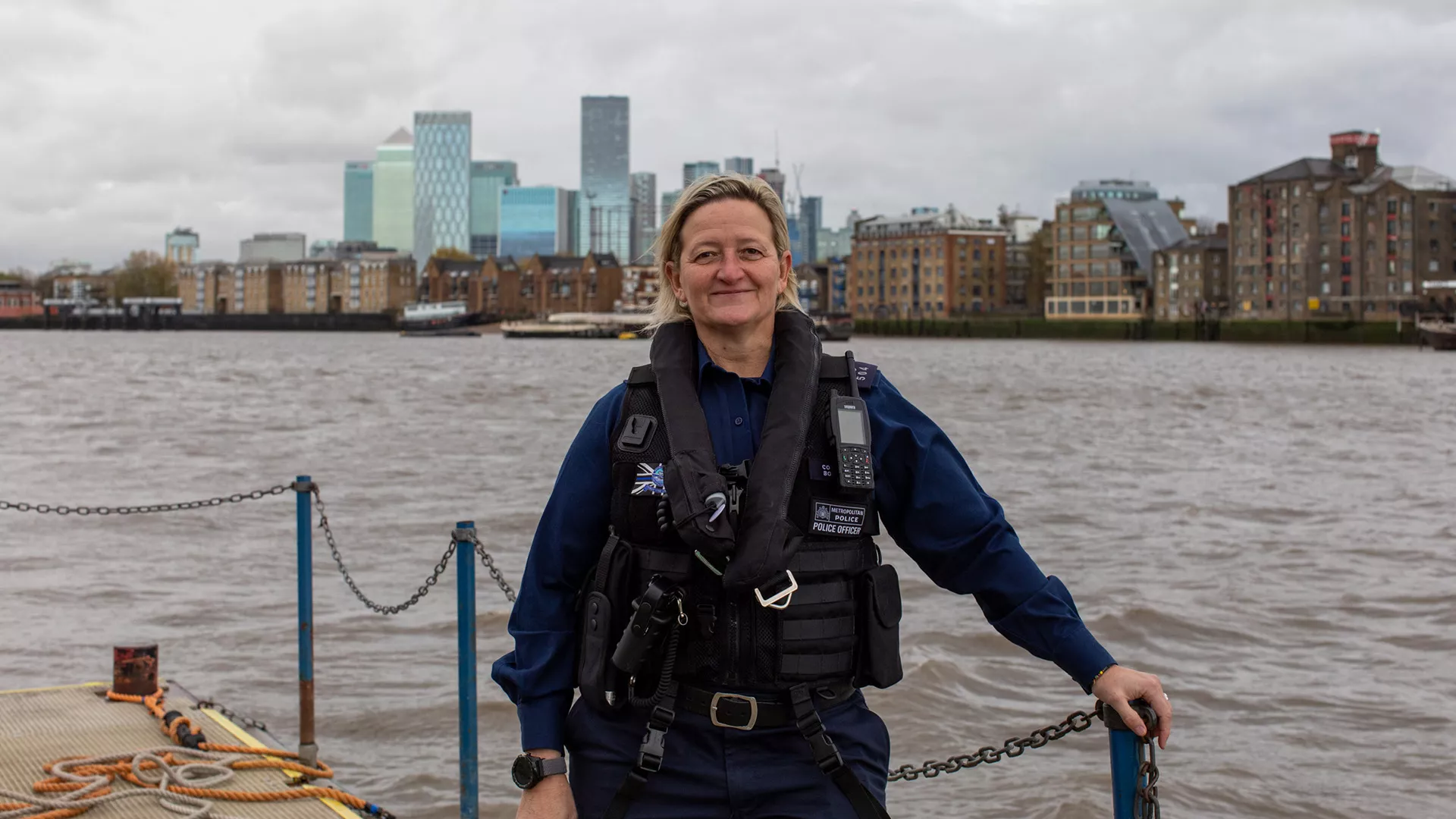
The return of the New Year’s Eve fireworks to the river in central London this year has kept Charmaine Boswarva, events and operations planner and her team at the Met’s Marine Policing Unit, busy since August.
Ending the year with a bang
“Having the New Year fireworks back on the river in central London, after a three-year break caused by Covid 19, will be a real tonic.
“Following the Boat Race’s return at Easter, it’s another big step forward in getting people back out on the river post the pandemic.
“My role is to ensure that all spectators have a safe and enjoyable night.
“That means putting in place measures to prevent any potential incidents.
“On the big night, I will be on the command vessel, updating the inspector in charge of anything that happens.
“It’s a long but enjoyable shift, starting at 7am on 31 December and running right through to 3am on New Year’s Day.
“It’s a real team effort, of course, involving scores of highly-professional fellow officers, including dog handlers, as well as colleagues from partner organizations, such as the PLA, London Fire Brigade and RNLI.
“The whole of December is usually a very busy time of year.
“It’s normally January before I can take some time off.”
A police calling
“I joined the Met in 2007.
“It’s a job I had always wanted to do, since I was a kid.
“I was actually quite a late joiner, but my previous jobs have really been helpful in my police work.
“After working in the tourism industry in my early twenties, I had a complete career change, joining my parents’ glazing and window tinting business.
“Like police work, tourism and sales are a service, involving dealing with people and managing expectations.
“Communication, being able to talk to people, is key to them all.
“But it was illegal to be gay in South Africa when I wanted to join the police there, so I didn’t apply.
“Instead, I came to London with my partner, who I had met in South Africa.
“I always said that I never wanted to move to the UK, because of the weather and dark winter days.
“But, I am so happy we made the move.”
Water roots
“I grew up on the east coast of South Africa.
“The beach and water were a huge part of my life as a kid.
“My family back home are all boat people.
“My brother is a skipper out on the oceans - completely different from the Thames.
“When I go back to South Africa, he can’t wait for me to go out on the boat with him.
“Like him, my father was very proud of my work in London.
“Unfortunately, Dad passed away before he could see me out on the River Thames.
“I used to send him photos though.
“He would show them to his friends with great pride.”
Diversity and inclusion
“Covering all waterways within the M25, not just the Thames, my role involves working with a wide range of stakeholders and partners to disrupt and minimise violence against women.
“I feel strongly about getting more women to realise they can work on the river and be accepted.
“Things are changing.
“Recently, we hosted a tour of Wapping Police Station for the Thames Skills Academy’s Women on the Water group, one initiative helping to make a difference.
“I also want to see more young people involved with the river.”
An unforgettable year
“The passing of HM Queen Elizabeth II will be the defining moment of 2022 for many of us.
“After years of reviewing our role in Operation London Bridge, I was humbled by the way everyone came together to make it work.
“It involved long hours for ten days, but no-one complained.
“The whole river community came together, as always.
“I felt incredibly proud to be part of it.”
Quick fire
- The river in three words? Historical. Magical. Diverse.
- Best view of the Thames? Sunrise over the river, viewed from the top of Wapping Police Station. It is so quiet and peaceful.
- Other interests: Virtual reality gaming, dog agility and general outdoors.
Related content


Location: London/Gravesend Remuneration: £28,971 per annum for a commitment of up to 24 days per...

Vanessa Howlison appointed to the Port of London Authority Board

Vanessa Howlison has been appointed a non-executive Board director of the Port of London Authority (PLA).
Vanessa is chief financial officer at National Highways, a post she took up in June 2016. Before joining National Highways, Vanessa was group finance director at the Department for Transport. She has previously been finance director for the Department of Energy and Climate Change, and Ofsted.
Vanessa also brings experience and enthusiasm for carbon accounting, which is very relevant to our ambitions for Net Zero at the PLA.
Jonson Cox, Chair of the PLA, said: “Vanessa will be a welcome new member of the Board, bringing highly relevant experience for the priorities on which we are focused. As an organisation our focus is on safety and delivering the Thames Vision. I expect Vanessa’s experience in infrastructure and the transition to Net Zero, within a complex and varied stakeholder environment, will prove especially valuable.”
Vanessa Howlison will join the PLA Board with effect from 1 January 2023 and will chair the audit and risk committee. She is a council member of the Accountancy body, Chartered Institute of Public Finance and Accountancy and also sits on its Sustainability Panel.
PLA non-executive director, and audit committee chair, Judith Armitt will step down from the Board at the end of the year, having concluded two terms on the PLA Board.
“Judith has been an invaluable member of the Board, chairing the audit committee and contributing actively to the evolution of the river development plan, Thames Vision 2050. We have also seen her active commitment to the Thames environment. She will leave with our thanks for all her contributions to the PLA,” concluded Jonson Cox.
Related content


Location: London/Gravesend Remuneration: £28,971 per annum for a commitment of up to 24 days per...

Isle of Dogs’ pier of opportunity for more light freight on Thames

With a view to increasing light freight on the river, the Port of London Authority (PLA) has acquired Masthouse Terrace Pier on the Isle of Dogs in East London.
PLA Finance Director, Julie Tankard, said:
“Through our investment strategy, we are working to encourage more trade on the river.
“With good connections to nearby Canary Wharf, we plan to expand the pier to make it the first in the capital with space dedicated to the transportation by river of parcels and other light freight.
“It’s a win-win. More river trade boosts the economy, creating jobs, and helps reduce carbon emissions in the capital, by taking lorries off the region’s roads.”
The pier will remain a stopping off point for Uber Boat by Thames Clipper River Bus services.
Related content


Location: London/Gravesend Remuneration: £28,971 per annum for a commitment of up to 24 days per...

Going for green on the Thames
Dave Watson
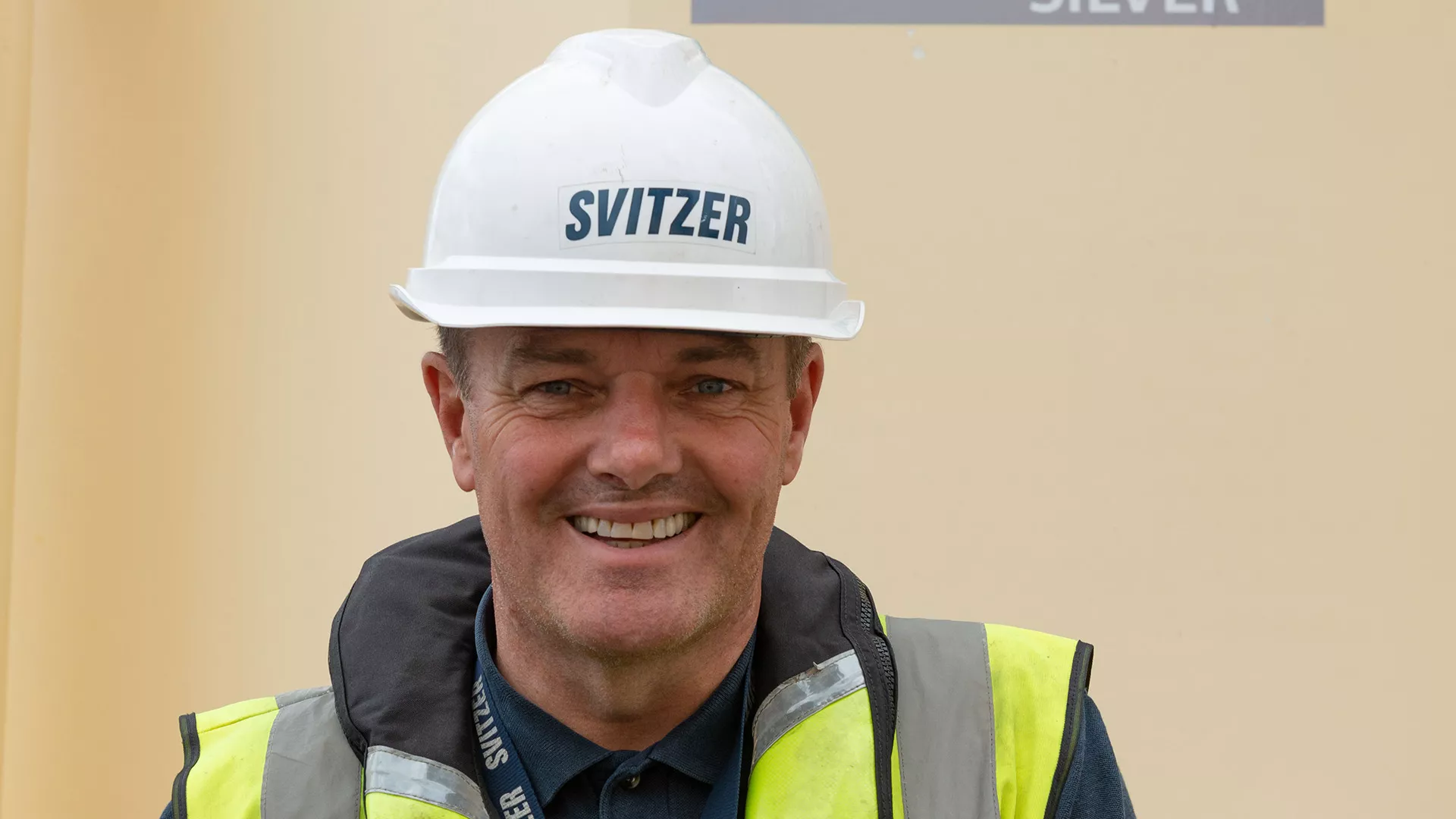
With family links to the river dating back over a century, Dave Watson of tug operator Svitzer is looking forward to a cleaner, greener, and busier Thames.
In the family way
“I was born and bred in Cliffe Woods on the Hoo peninsula and still live there today.
“The river has always been a part of my life.
“I guess it’s sort of in my blood.
“When I was growing up, my dad, Ray, worked on the river for the Alexandra towing company.
“His dad and three brothers were also employed on Thames tugs.
“It was perhaps inevitable that I would follow them into a life working on the river.
“Today my cousin works with me at Svitzer as chief engineer.
“I must have been around five years old when I first went afloat as part of a family day.
“Everyone looked forward to the family days.
“They provided a fantastic insight into how tugs operated, moving vast cargoes up and down the river."
A career afloat
“I have been working on the river for 36 years now.
“After leaving school, I started out as a trainee manger with Tesco.
“I joined Alexandra Tugs in 1986. It was taken over first by Howard Smith and then Adsteam, before Svitzer acquired the business in 2007.
“My first job afloat was as a cook.
“Gradually I rose my way up through the ranks to become chief engineer.
“In July 2017, I was asked to help out the Svitzer shoreside technical team.
“The following year, I took up the position of London technical superintendent."
Life-long learning
“At the age of 49, to get the qualifications I needed to further my career, I started a course with the Isle of Man University.
“Passing my Competence of Ships Superintendents course, within the time frame Svitzer had set, was the most memorable day of my working life.
“It is never too late to learn.
“I am pleased to say that Svitzer runs an apprenticeship scheme.
“Trade on the river is expanding, so it’s a fantastic opportunity.”
Environmental progress
“In recent years, alongside the welcome expansion of Tilbury and Gateway, there has been a much-needed shift in public and business environmental attitudes.
“In 2018, I attended the PLA’s annual environment conference.
“It was following a presentation on the Thames Green Scheme, that I made it my mission to get Svitzer accredited.
“I started running a fuel-efficiency programme, which Svitzer now operates globally.
“We are continuously looking at new designs and fuel types.
“Our switch to hydro-treated vegetable oil is part of our EcoTow offering, which enables our customers to reduce their carbon footprint.
“I felt very proud when we received the silver award earlier this year.”
A safer working river
“In 1976, Dad was on board the tug Vanquisher, when she sank at the entrance to Tilbury Dock. Fortunately, there were no fatalities.
“Dad was awarded a medal by Princess Alexandra for swimming round the vessel to rescue a colleague, trapped in the engine room.
“Incredibly, years ago personal protective equipment (PPE) wasn’t even considered.
“Now it’s rightly a requirement.
“The safety culture has improved so much during my time on the river, so happily there are fewer serious incidents.”
Working philosophy
“At Svitzer, we put safety first and our customers at the heart of everything we do.
“Based at Denton Wharf, Gravesend, there are three of us in the tech team.
“We are on call 24/7 for emergencies.
“I am responsible for the successful running of the Svitzer fleet, including dealing with breakdowns, arranging for vessels to go into dry dock, and liaising with the Maritime Coastguard Agency.
“Our services are essential to the smooth operation of the port.
“Solving needs and pain points for customer, ports and marine communities is our core passion.”
Quick fire
- The river in three words? Ever-changing, unique and fascinating.
- Favourite time of day and year on the river? Evenings, when the sun is setting. I do enjoy the different colours autumn brings too.
- Best view of the Thames? Passing through Tower Bridge, in either direction.
Related content


Location: London/Gravesend Remuneration: £28,971 per annum for a commitment of up to 24 days per...

Discover



